The
Present Continuous Tense:
a Lesson Plan
This lesson introduces the Present Continuous Tense to beginning ESL students. It requires 1 1/4 - 1 1/2 hours, and gives practice with reading and writing, as well as listening and speaking.
Preparation
Lesson Objective: Students will recognize and use the present continuous tense. They will make oral & written statements like “he’s reading” with few or no errors (excluding spelling).
Materials needed:
1. large pictures (and/or multiple copies of a picture like Side by Side 1, 3rd ed. Pg.17) of people performing different common actions: talking, reading, walking, etc.
(Most ESL texts and picture dictionaries have at least some suitable pictures. If your class isn’t using a textbook, you can also find free pictures online. Check clip art, speech therapy action pictures, crowd scenes, etc.)
Some possibilities:
>>> Highlights Hidden
Pictures, B&W printable; including ‘New Neighbors:’ they’re moving; the men
are carrying a table, a child is looking out the window, etc. . There are other good ones like ‘A Day at the Fair’ or ‘Farmers’ Market.’
>>> Discovery Ed Clipart has kids doing things...
2. half a class set of stories with related pictures. (Our class used Side by Side 1, pg. 22-23, but any similar story with pictures would work.)
You can use this letter about camping if you like. Or you could make one yourself based on a picture you can reproduce and your students’ needs.)
3. per group of 3-4 students: one picture dictionary. Alternative: a picture scene (from a magazine?) with a lot of people doing things.
This needs to be a different scene or scenes than #1, but the sources above would still work. Even better, because there is more going on, is Where's Waldo?
The first one (at the beach), with one section enlarged, could generate possible sentences like these: "They’re riding horses" (or walking, or building with sand.) "The boy with _____ is walking." "The girl is wearing shorts," etc.
Our class used the New Oxford Picture Dictionary pg.90-91 (and sometimes pg.96-97 for verb names.)
Planning & Problem-solving
When to teach this lesson (based on recently taught lessons):
Students should be familiar with pronouns & present tense ‘to be’, including contracted forms. They also need basic classroom vocabulary and commands including listen, talk, read, write, open, close, pick up, stand up, sit down. Students should be from cultures that allow group competitions (or see problem 3.)
Anticipated problems & solutions:
Problem 1: Students still have very limited vocabulary.
Solution: pre-teach needed vocabulary (before reading). Provide a picture dictionary with more vocabulary for the final competition.
(If picture dictionaries are unavailable, pre-teach the verbs & other words in the picture for the competition. Try to choose a picture with limited new vocabulary besides what was in the reading.)
Problem 2: There is not a lot of time in this lesson to teach the spelling rules for forming the present continuous tense. However, it would reinforce students’ learning to think of and write sentences using the tense.
Solution: assure students it’s OK to concentrate on good sentences and not worry about spelling for now. Note that they will get the spelling rules soon. (Englishclub.com has a good worksheet for the spelling rules. You might need to help some beginners with parts of it. Look it over, considering how much your students understand.)
Alternative solutions: 1. write the verbs they are likely to need on the board.
2. If the class has students who fret if they can’t do everything accurately, pre-teach the competition picture vocabulary. For example, the picture dictionary gives verbs only in the base form on pages 96-97. You might teach the gerund forms: running, riding a bicycle, surfing, throwing, etc.
3. If students ask about the spelling changes, mention that sometimes there’s a minor spelling change. Dropping a final ‘e’ before adding ‘-ing' is a simple & reliable rule.
Problem 3: Some students do not like competition, due to either personality or culture.
Solution: Convert the evaluation activity from a competition to a whole-class collaboration. See the end of the lesson.
Introducing the Present Continuous Tense
Introduction (5 min.)
Tell your students “Stand up.” Say & write on the board “You are standing.” Repeat with several other known commands to the class or various individuals. In each case, ask what he, she, or they are doing. Write it on the board: “You’re sitting,” he’s reading,” “she is writing,” “I’m talking,” etc.
Announce “Today we will practice the present continuous tense.”
Presentation (10-15 min.)
Point out the rule: We form the present continuous tense with the verb “to be” and an active verb with an “-ing” ending. (Write on the board: “Present continuous tense: be + ing.”) The present continuous tense tells what is happening right now. Show sentences from the Introduction as examples.
Ask comprehension questions: What am I doing? (Write the correct answers students give on the board.) What is ____ doing? (a student who is taking notes.) Is this in the present continuous tense? (Write a gerund on the board by itself.) (No) That’s right. Is this better? (Add “he is.”)
Have students open Side by Side 1 to pg. 17, or pass out similar picture sheets. (You could also hold up big pictures, or draw on the board and mime the actions.) Pre-teach any new vocabulary for the pictures you will use later.
Ask comprehension questions (“In picture 2, is she sleeping?” [No] “What IS she doing?” etc.)
Practice and Evaluation
Guided Practice 1 (5 min.)
Demonstrate by miming an activity and asking, “What am I doing?” Then have students mime various activities to their partners and ask that. (During the demo, write it on the board). The partners guess, then take their turns at miming.
Practice 2 (15-25 min.)
Students hear, read, and tell or read aloud one or two simple stories to become more familiar with the present continuous tense.
1. Have students open Side by Side 1 to pg.22 or pass out the picture story/stories you will use. Elicit the location of each story from students. Then ask comprehension questions to make sure they understand ‘in the park,’ ‘at home,’ ‘at the beach,' etc.
2. Read the (first) story out loud while students read along. Ask what various people in the story are doing.
3. Students in pairs read the story to each other.
4. Ask for a volunteer to model telling the story (by describing the picture) without reading it.
5. Partners take turns telling the story to each other (with the speaker covering the text.)
When you give instructions, point out that the student does not need to tell the story exactly as written. What's important is to use the correct verbs to describe the actions.
Ask: if your partner says “the boy is playing the guitar,” is that OK? [yes.] If your partner says “the girls studying,” is that right? [no.] What’s the right way to say it? [“The girls ARE studying” or “Sally & Patty ARE studying.”] Partner should correct if the tense isn’t formed correctly— as in the reading.
6. If using pg. 22, repeat steps 1-5 with the 2nd story.
Practice 3 (15-20 min.)
Have student pairs write a short story about activities in a different picture. (They could tell about the Side by Side 1 pg.23 picture “At the beach” or a similar picture. They'll use the pre-taught vocabulary.) Circulate to help and to check tense use.
Evaluation (25 min.) Group Competition:
Student groups write present continuous tense sentences about a picture with lots of activity.
1. Divide students into groups of 3 or 4. (Try to make groups as evenly matched as possible, with more and less proficient students in each.)
2. Have students open their texts or picture dictionaries to a picture with a lot of activities. For example, in the New Oxford Picture Dictionary try pgs. 90-91 to describe actions at the beach. As an alternative, pass out copies of an appropriate picture to each group.
You can also suggest they can refer to pg. 96-97 for more action verbs they can use with ‘’to be’ by adding ‘ing’ to the end of the verb.
3. Demonstrate what student groups should do: Write a sentence describing one of the activities in the picture on the board. (If they copy this they will all have at least one sentence!)
Then each group makes a list of sentences describing what people are doing in the picture. (During demo point out that students should take turns making up the sentences, but one may write them all if the group prefers.) The group with the most correct present continuous tense sentences “wins.”
Circulate to observe, then call ‘time’ and collect and check the sentences. All sentences count if they have the correct present continuous form. Note spelling and other errors for later but for now only announce the winning group.
If competition is a problem for your students, have each group make as many sentences as they can. Then compile them into a class list, with groups taking turns adding new statements to the list.
___________________________
If your students enjoy working in groups, check out the Clothing Vocabulary lesson below. It’s also a lot of fun, and may work even better if competition is a problem where you teach.
Related Pages to Check:
Adult students really enjoy this lesson on clothing vocabulary, preparing, then taking turns ‘shopping’ at their classmates’ stores.
Games are so useful in ESL classes! Get free printable puzzles, vocabulary matching games, and inexpensive packets of games to practice irregular verbs.
Pdfs with grammar games & exercises for verb tenses (especially irregular past tense verbs), practice with sentence structure, etc.
Home> ESL Lesson Plans> Introducing the Present Continuous Tense.
Didn't find what you
needed? Explain what you want in the search box below.
(For example, cognates, past tense practice, or 'get along with.') Click to see the related pages on EnglishHints.
| site search by freefind | advanced |
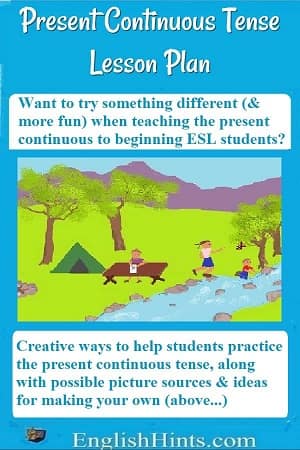
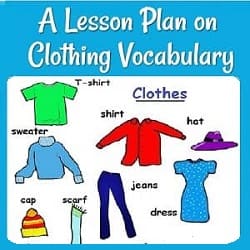
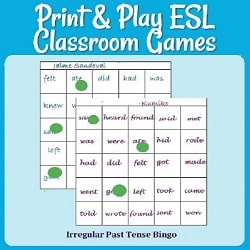
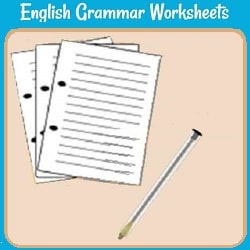


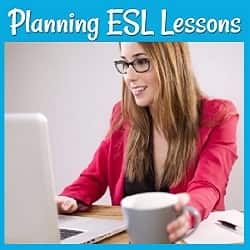





New! Comments
What do you think about what you just read? Leave me a comment in the box below.